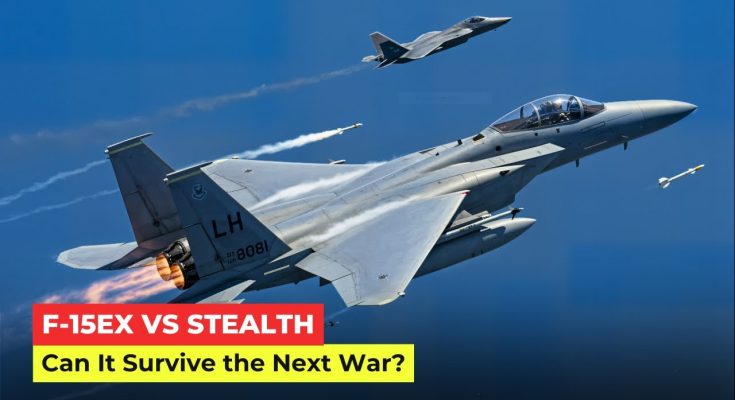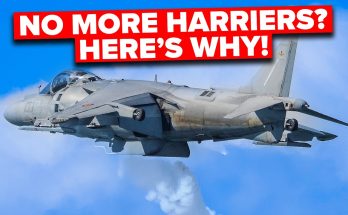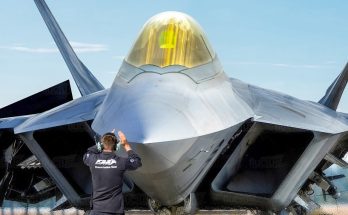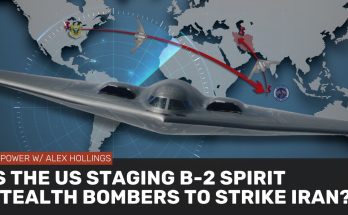The F-15EX is an upgraded version of the legendary F-15 Eagle, a fighter jet that has been in service with the U.S. Air Force since the 1970s. The F-15EX is designed to complement more advanced aircraft like stealth fighters (such as the F-22 Raptor and F-35 Lightning II) in modern combat scenarios. While the F-15EX offers significant improvements over older versions of the F-15, the question of whether it can survive in a future war dominated by stealth technology and advanced air defense systems is a complex one. Here’s a breakdown of the key considerations:
Strengths of the F-15EX
-
Superior Firepower: The F-15EX can carry a wide range of air-to-air and air-to-ground weapons, including advanced radar-guided and infrared-guided missiles. Its larger payload capacity allows it to carry more weapons than many stealth fighters, which makes it an effective strike platform for a variety of mission sets.
-
Advanced Avionics and Systems: The F-15EX is equipped with modern avionics, radar systems, and electronic warfare equipment, making it more capable in contemporary battle spaces. The aircraft features advanced radar systems such as the AESA (Active Electronically Scanned Array) radar, which allows it to detect and track multiple targets at long ranges and in cluttered environments.
-
Proven Airframe and Performance: The F-15’s airframe is well-proven, with exceptional speed, maneuverability, and range. The F-15EX builds on these capabilities and adds modern features such as digital cockpit displays, enhanced engines, and upgraded mission systems. Its ability to operate in diverse conditions and maintain high performance at various altitudes gives it an advantage in many combat scenarios.
-
Cost and Availability: Compared to stealth fighters like the F-35, the F-15EX is more affordable to acquire and maintain. It offers a way for the U.S. Air Force to modernize its fleet without the astronomical costs of stealth technology. Additionally, the F-15EX can be produced in higher numbers, ensuring a large and ready fleet.
-
Compatibility with Legacy Systems: The F-15EX can integrate with many existing systems, including older F-15s, and can be used in a variety of missions alongside stealth aircraft. This makes it a versatile addition to the U.S. Air Force’s lineup.
Challenges Faced by the F-15EX Against Stealth Fighters
-
Stealth and Radar Visibility: The primary advantage of stealth fighters like the F-22 and F-35 is their low radar cross-section (RCS), which makes them harder to detect by enemy radar. The F-15EX, despite its modern upgrades, is not a stealth platform and will be more easily detected by advanced radar systems. In a future war where advanced radar and surface-to-air missiles (SAMs) are ubiquitous, this could put the F-15EX at a disadvantage compared to stealth fighters that can avoid detection until it’s too late for the enemy.
-
Advanced Air Defense Systems: Countries like Russia and China have developed highly capable air defense systems (like the S-400 and S-500) that can target and engage aircraft at long ranges. These systems are designed to counter both traditional and stealth aircraft. The F-15EX, while capable of evading some radar systems with its maneuverability and countermeasures, could still struggle in heavily defended airspace against advanced air defenses, particularly when compared to the stealth capabilities of newer fighters.
-
Electronic Warfare and Countermeasures: While the F-15EX is equipped with advanced electronic warfare systems, it still lacks the level of stealth and electronic countermeasures integrated into fighters like the F-35. Stealth fighters can operate in contested airspaces with a lower probability of being detected, and they have advanced systems for jamming and defeating enemy radar and missiles. The F-15EX will likely be more reliant on support from stealth fighters or suppression of enemy air defenses (SEAD) missions to survive in high-threat environments.
-
Missile Technology and Range: Stealth fighters like the F-35 have longer-range and more advanced missiles (such as the AIM-120 AMRAAM) integrated with their systems, and their stealth capabilities enable them to launch missiles from beyond visual range (BVR) without being detected. While the F-15EX can carry a similar armament, it may not be able to close the distance as easily or survive in a high-risk environment where stealth fighters could operate more effectively.
Can the F-15EX Survive the Next War?
The F-15EX can certainly play a role in a future conflict, but its survivability in high-intensity warfare dominated by advanced stealth fighters, air defense systems, and other modern threats will depend on the scenario:
-
Support Role: In a multi-role force structure, the F-15EX can operate alongside stealth fighters, providing significant firepower and range. Its ability to carry a large payload of weapons makes it useful for strike missions and force projection. In this context, it might serve as a more affordable and plentiful asset to complement more expensive stealth platforms.
-
Cooperative Operations: The F-15EX will likely be used in conjunction with stealth fighters like the F-35 or F-22. The stealth fighters can provide air superiority and strike targets while the F-15EX can conduct a variety of other missions, such as air-to-ground strikes and providing long-range support.
-
Vulnerability: The F-15EX is less suited for solo operations in contested airspaces where stealth and survivability are critical. In these scenarios, its lack of stealth and higher detectability could make it vulnerable to advanced surface-to-air missiles and fighter interceptors. It will require a robust support system (including stealth aircraft, electronic warfare support, and suppression of enemy defenses) to operate effectively in these environments.
Conclusion
The F-15EX is a powerful and cost-effective solution for modernizing the U.S. Air Force’s fleet, but it faces challenges in a future where stealth technology and advanced air defense systems dominate. Its survivability will depend on how it is used within a networked force, where its strengths in firepower, versatility, and range can complement the capabilities of stealth fighters. In a purely contested, high-tech war, it would face significant risks, but when paired with the right tactics and support, the F-15EX can still play a crucial role in the next generation of aerial combat.



